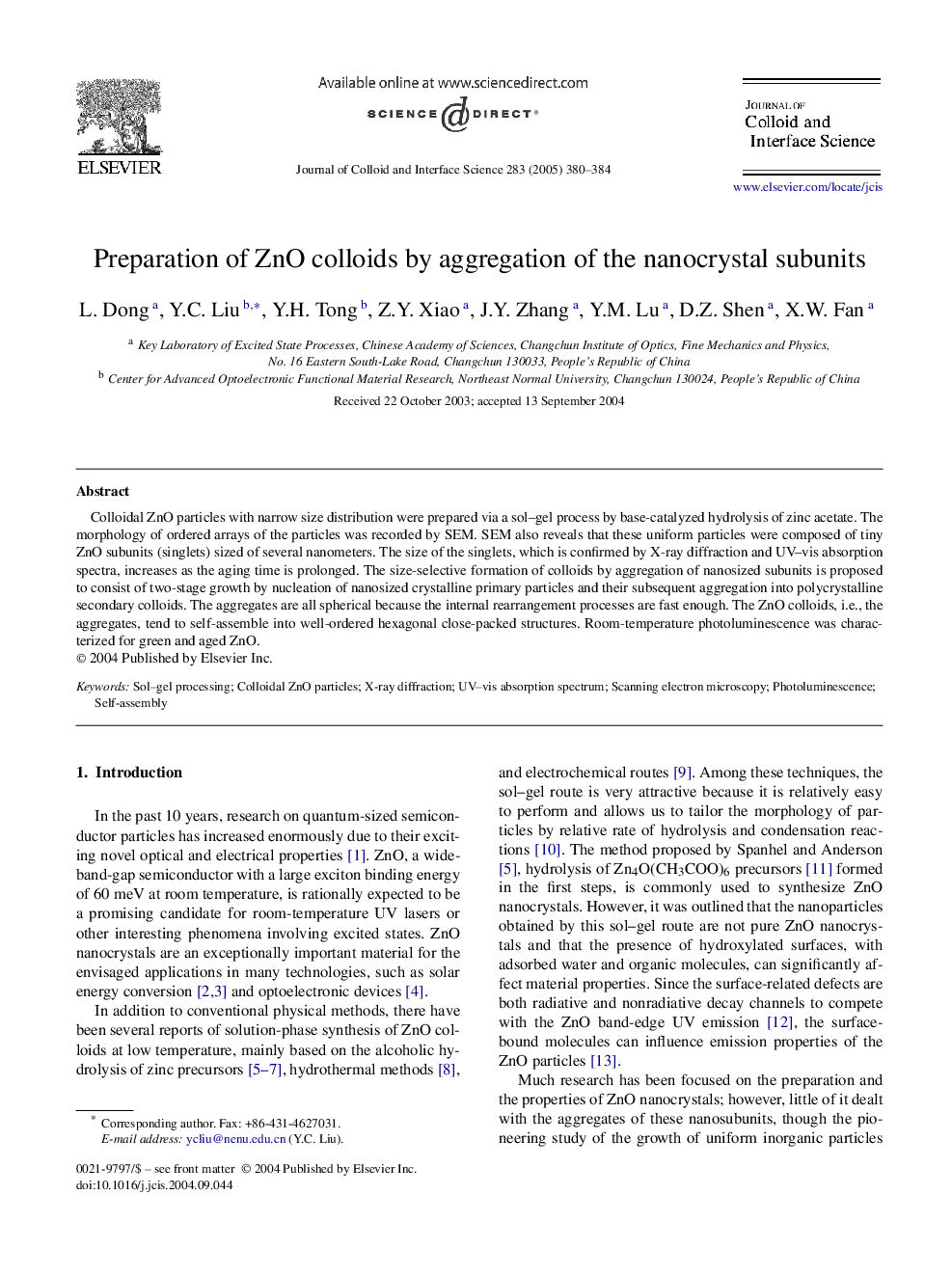| Article ID | Journal | Published Year | Pages | File Type |
|---|---|---|---|---|
| 10378385 | Journal of Colloid and Interface Science | 2005 | 5 Pages |
Abstract
Colloidal ZnO particles with narrow size distribution were prepared via a sol-gel process by base-catalyzed hydrolysis of zinc acetate. The morphology of ordered arrays of the particles was recorded by SEM. SEM also reveals that these uniform particles were composed of tiny ZnO subunits (singlets) sized of several nanometers. The size of the singlets, which is confirmed by X-ray diffraction and UV-vis absorption spectra, increases as the aging time is prolonged. The size-selective formation of colloids by aggregation of nanosized subunits is proposed to consist of two-stage growth by nucleation of nanosized crystalline primary particles and their subsequent aggregation into polycrystalline secondary colloids. The aggregates are all spherical because the internal rearrangement processes are fast enough. The ZnO colloids, i.e., the aggregates, tend to self-assemble into well-ordered hexagonal close-packed structures. Room-temperature photoluminescence was characterized for green and aged ZnO.
Keywords
Related Topics
Physical Sciences and Engineering
Chemical Engineering
Colloid and Surface Chemistry
Authors
L. Dong, Y.C. Liu, Y.H. Tong, Z.Y. Xiao, J.Y. Zhang, Y.M. Lu, D.Z. Shen, X.W. Fan,
